Forums
- Forums
- Duggy's Reference Hangar
- IJAAF Library
- Yokosuka MXY7 Ohka (Baka)
Yokosuka MXY7 Ohka (Baka)
Post a reply
- Go to Previous topic
- Go to Next topic
- Go to Welcome
- Go to Introduce Yourself
- Go to General Discussion
- Go to Screenshots, Images and Videos
- Go to Off topic
- Go to Works in Progress
- Go to Skinning Tips / Tutorials
- Go to Skin Requests
- Go to IJAAF Library
- Go to Luftwaffe Library
- Go to RAF Library
- Go to USAAF / USN Library
- Go to Misc Library
- Go to The Ops Room
- Go to Made in Germany
- Go to Campaigns and Missions
- Go to Works in Progress
- Go to Juri's Air-Raid Shelter
- Go to Campaigns and Missions
- Go to Works in Progress
- Go to Skinpacks
- Go to External Projects Discussion
- Go to Books & Resources
-
9 years agoSat Sep 04 2021, 10:47pmDuggy
 Main AdminJapan's naval officers, in the summer of 1944, were faced with the almost sure knowledge that their country's defeat was simply a matter of time, as the immense material strength of the Allies was brought to bear on Japan. The times were desperate, and desperate measures were called for. Even before Vice Admiral Ohnishi ordered the creation of the Kamikaze Special Attack Force in October 1944, some naval officers were seeing suicide attacks as the only way to defeat the powerful, well-defended Allied fleets. One of these men was a transport pilot of the 405th Kokutai, Ensign Mitsuo Ohta. He conceived the idea of a rocket-propelled suicide attack plane, and with the aid of personnel from the University of Tokyo's Aeronautical Research Institute, he drafted preliminary plans for his brainchild. In August 1944 he submitted his drawings to the Naval Air Technical Arsenal at Yokosuka. The Navy decided that Ensign Ohta's idea had merit, and so the Arsenal was instructed to prepare a set of detailed blueprints - the engineers involved were Masao Yamana, Tadanao Mitsugi, and Rokuro Hattori.
Main AdminJapan's naval officers, in the summer of 1944, were faced with the almost sure knowledge that their country's defeat was simply a matter of time, as the immense material strength of the Allies was brought to bear on Japan. The times were desperate, and desperate measures were called for. Even before Vice Admiral Ohnishi ordered the creation of the Kamikaze Special Attack Force in October 1944, some naval officers were seeing suicide attacks as the only way to defeat the powerful, well-defended Allied fleets. One of these men was a transport pilot of the 405th Kokutai, Ensign Mitsuo Ohta. He conceived the idea of a rocket-propelled suicide attack plane, and with the aid of personnel from the University of Tokyo's Aeronautical Research Institute, he drafted preliminary plans for his brainchild. In August 1944 he submitted his drawings to the Naval Air Technical Arsenal at Yokosuka. The Navy decided that Ensign Ohta's idea had merit, and so the Arsenal was instructed to prepare a set of detailed blueprints - the engineers involved were Masao Yamana, Tadanao Mitsugi, and Rokuro Hattori.
The MXY7, as the design was named, was intended as a coastal-defense or anti-invasion weapon, launched by a "parent" aircraft. Once released by its "mother" ship - usually a G4M twin-engined bomber - the MXY7 would glide downwards, and once the pilot had selected a target, the weapon would accelerate to attack speed using the power of three solid-fuel rockets mounted in the tail. These rockets could be fired one at a time or all three simultaneously. Theoretically, when it was at its terminal velocity, the MXY7 would be virtually impossible to stop, and only pilot error could cause it to miss. This small but lethal aircraft was to be built of wood and non-critical metal alloys, utilizing unskilled labor, and as it would be flown by pilots with only limited aerial experience, flight instruments were to be kept to a bare minimum and good maneuverability was required to achieve accuracy in flying and aiming the "manned missile".
The actual aircraft itself looked rather like a torpedo to which wings and twin tail surfaces had been added as an afterthought. There was nothing aesthetically pleasing about the MXY7; indeed, it was hideously ugly. Barely 20 feet long, and with wings spanning just a shade over 16 ? feet, its sliding canopy was rather hump-backed. In front of the canopy was a ring sight, with a bead sight in front of that, for precise aiming when in the terminal dive on a target. One wonders how it was possible to make the little monster work, how a human pilot could control it; but it did at times succeed, as will be told later.
Ten MXY7s were completed by the end of September 1944. Unpowered flight trials began at Sagami the following month, and in November the first powered flight was made at Kashima. The MXY7 was accepted for Navy service under the name Navy Special Attacker Ohka Model 11. It was powered by a battery of three Type 4 Mark 1 Model 20 rockets, which produced 1,764 pounds of thrust, combined, for 8 to 10 seconds of powered flight. Performance measured during an unmanned flight at Kashima in January 1945 indicated that the Ohka could reach a top unpowered speed of 288 mph and a top powered speed of 403 mph, both speeds being attained at a height of 11,485 feet. Interestingly, the Imperial Navy didn't bother to wait for all test results to come in; production began with the first ten Ohka Model 11s in September 1944, and 755 were built by the end of March 1945, when production of this variant ceased. One hundred and fifty-five were built by the Naval Air Technical Arsenal at Yokosuka, and 600 more by the First Naval Air Arsenal at Kasumigaura; Nippon Aircraft Ltd. and Fuji Aircraft Ltd. were subcontractors for the wings and tail units. But barely a hundred of them were actually used in operations.
The Ohka's debut was highly inauspicious. Sixteen G4M2e mother planes of the 721st Kokutai, each carrying a single MXY7, took off from Kanoya on March 21, 1945 to attack an American carrier task force 320 miles off the coast of Kyushu, the southernmost of the four main Japanese home islands. Two additional Bettys went along as navigation and radio planes. Their commander was Lt. Cdr. Goro Nonaka, a veteran torpedo bomber pilot. Nonaka's last words, just before he entered his bomber for the mission, were "This is Minatogawa." He was referring to the battle in the 14th Century Japanese civil war between the Northern and Southern imperial courts, where one of Japan's greatest military heroes, the Southern commander, Masashige Kusunoki, killed himself after losing, saying, "Shikisei hokoku!" (I wish I had seven lives to give for my country!) It's all very well to invoke great historical parallels, but in the real world of 1945, the attack was a complete, humiliating fiasco. Fifty-five Zero fighters from the 201st Kokutai were assigned to fly escort, but mechanical failure caused by poor maintenance forced some fighters to abort without leaving the ground, and others had to abort when airborne. Only 30 Zeros actually accompanied the 18 Bettys to the combat area, where fifty F6F Hellcats attacked them well before they reached optimal launching range. Ignoring the escort fighters, the American carrier fighters concentrated on the bombers and their strange under-belly cargo. All of the Ohkas were jettisoned (the pilots remained with the mother ships), but 15 of the Bettys were destroyed in swift order. Three more, including Cdr. Nonaka's, tried to take cover in a nearby bank of clouds, but they were soon found and shot down as well. Fifteen of the 30 escorting Zeros were also lost, with the remnant returning home in varying states of damage. This episode pointed up the worst failings of the Ohka, or Baka ("stupid" in Japanese) as the Allies called it: the mother aircraft, when carrying it, was a fat, wallowing aerial whale, lacking speed and maneuverability, easy meat for defending interceptors. And the Ohka lacked range, even when gliding; it had to be launched from no more than 20 nautical miles (23 statute miles) away from its prospective target. Very few Ohkas actually struck their targets, as it was so difficult to launch and to maneuver under its pilot's hands. But once released, and once the rockets were ignited, the Ohka was impossible to stop. Its first successes were scored the first day (April 1, 1945) of the American invasion of Okinawa, when the battleship West Virginia and three transports were hit, and on April 12, an Ohka scored its first sinking by sending the destroyer Mannert L. Abele to the bottom of the sea. The destroyer-minesweeper Shea was hit by an Ohka on May 4, and barely escaped total loss, as a fire started by the Ohka almost reached the ship's magazines before the damage-control men brought it under control. Its last success came on June 16, when an Ohka and a bomb-carrying Zero almost simultaneously struck the destroyer Twiggs, which sank within a few minutes.
nd 368 damaged to varying extents, often seriously. The US Navy lost more sailors dead and wounded than the Army and Marines lost in the ground combat, making Okinawa, next to the Guadalcanal campaign, the bloodiest and most difficult of the war for the Navy. The Japanese lost about 7,600 planes, more than half of which were suicide planes; the Americans lost 763 planes of their own. It is not known for sure exactly how many Ohkas scored hits and sinkings, but it was the most feared and hated of all types of kamikazes.
It might be well to mention here that a number of Ohkas were captured on Okinawa itself. Apparently, the Japanese shipped several Ohkas to that island before the campaign opened, probably meaning to use the airfield at Yontan as a refuelling and arming point. But American aerial supremacy never allowed the Japanese to base any aircraft there after about March 25, and the Americans took Yontan very quickly after the landings. And so, the MXY7s were never used, and quite a few "Baka bombs" were captured intact. Most of the surviving examples in museums came from this source.
Further development of the basic Ohka theme continued, but no other variants other than the Model 11 were used in combat. Forty-five examples of the Ohka K-1, an unpowered trainer with water ballast replacing the powerplant and warhead, were produced by Yokosuka to provide pilots with limited experience in handling a simulation of the real thing in flight. Both water ballast tanks would be emptied during the practice terminal dive, slowing the landing speed to 138mph, and the glider would then land on retractable skids.
The Ohka Model 22 was intended as an improved version to be launched from the faster and more maneuverable P1Y3 variant of the Navy's Ginga bomber. Because the Ginga could not carry the same payload as the G4M2e, and because of the limited space under the P1Y3 compared to the Betty mother plane, the Ohka 22 was to have shorter wings and a lighter explosive payload (1,323 lbs.). The Ohka 22 received a Tsu-11 turbojet - a Campini-type jet engine - with a 100-hp Hitachi four-cylinder inline engine as a gas generator. It was hoped that the Ohka would have greater range with this jet engine, and so the mother ships could more easily survive attack by releasing the Ohka 22 farther away from target. Fifty Ohka 22s were built by Yokosuka, and an ambitious production scheme was planned, with Aichi doing most of the final assembly and with the smaller concerns of Murakami, Miguro, and Fuji serving as subcontractors. But due to the increasingly bad war situation, Aichi was unable to begin production, so the Imperial Navy planned to concentrate Ohka 22 production in underground factories managed by the Air Arsenal at Kasumigaura. The war ended, however, before any of the underground factories could be completed. One Ohka 22 was test-flown in July 1945, launched by a Betty because the proposed P1Y3 Ginga was not yet built, but auxiliary rockets installed under the Ohka's wings ignited prematurely just after release, and the Ohka 22 went into an unrecoverable stall, killing its pilot.
The Ohka Model 33 was an enlarged Model 22 powered by a Ne-20 turbojet and fitted with a 1,764-lb. warhead. Its intended mother ship was the G8N1 Renzan four-engined bomber, but the low priority given the G8N program led to the Ohka 33's cancellation before any examples could be completed. Also unbuilt was the Ohka 43A, a still larger variant with folding wings intended for launching from surfaced submarines. The Model 43B, a development of the 43A, was to have been a shore-launched manned missile, stored in and catapulted from caves. Once in the air, the Ohka 43B's wingtips would've been jettisoned to increase the type's speed, but no prototypes were built by the time of Japan's capitulation. But three examples of a two-seat training version of the 43B, designated Ohka Model 43 K-1 Kai Wakazakura (Young Cherry), were produced before the surrender. These had retractable skids and flaps for landing, and the warhead was replaced by a second cockpit for the student. One Type 4 Model 1 Mark 20 rocket was mounted in the tail for limited powered-flight experience.
Other Ohka developments included a single example of the Model 11 experimentally fitted with wings fabricated by Nakajima out of thin steel; the Ohka Model 21, a hybrid consisting of the rocket powerplant of the Model 11 married to the airframe of the Model 22; and the Ohka Model 53, to be powered by a Ne-20 turbojet, and towed aloft like a glider and released over the target by its towplane. Total production of all Ohka variants was 852 examples.
Below Trainer with skid
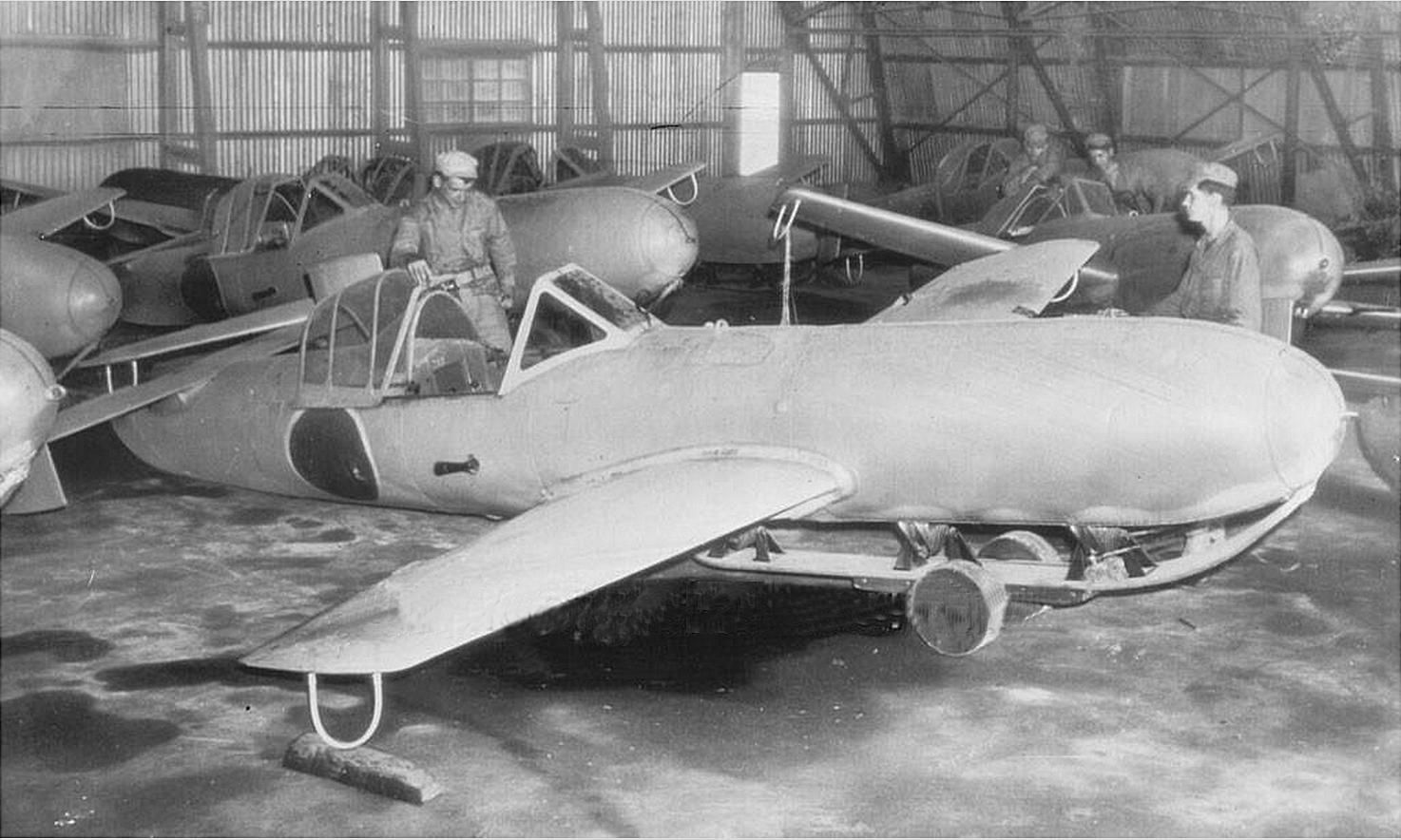
Below Two seat K2 catapult trainers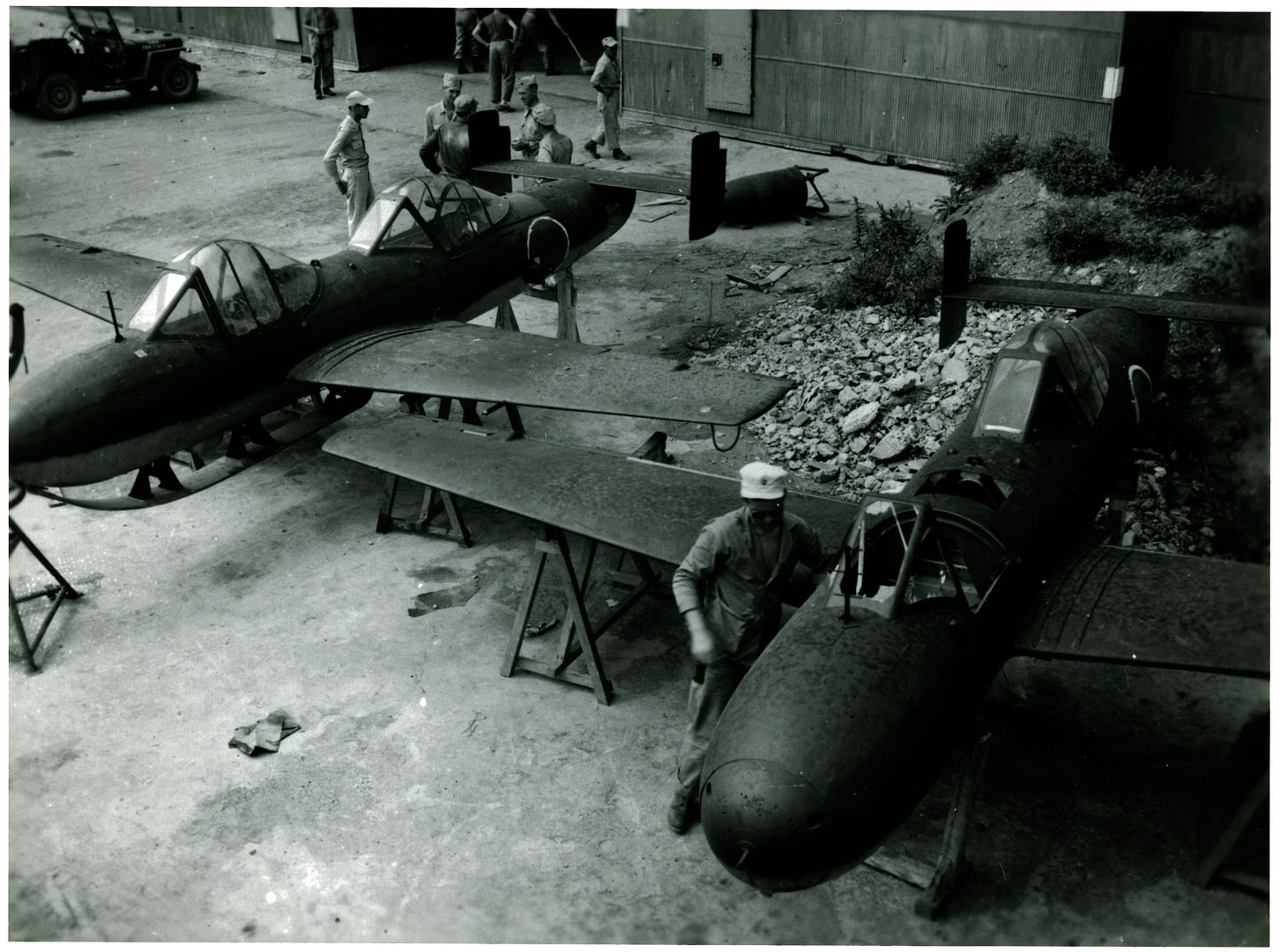
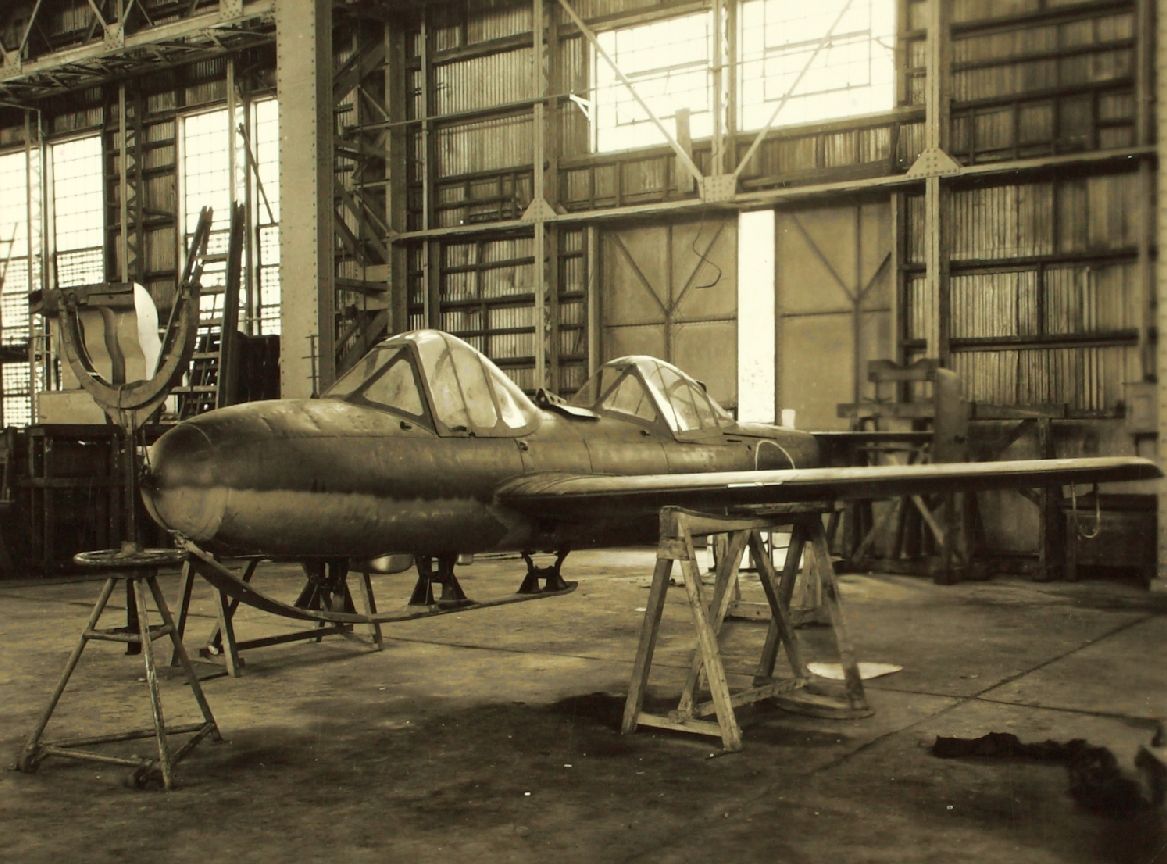
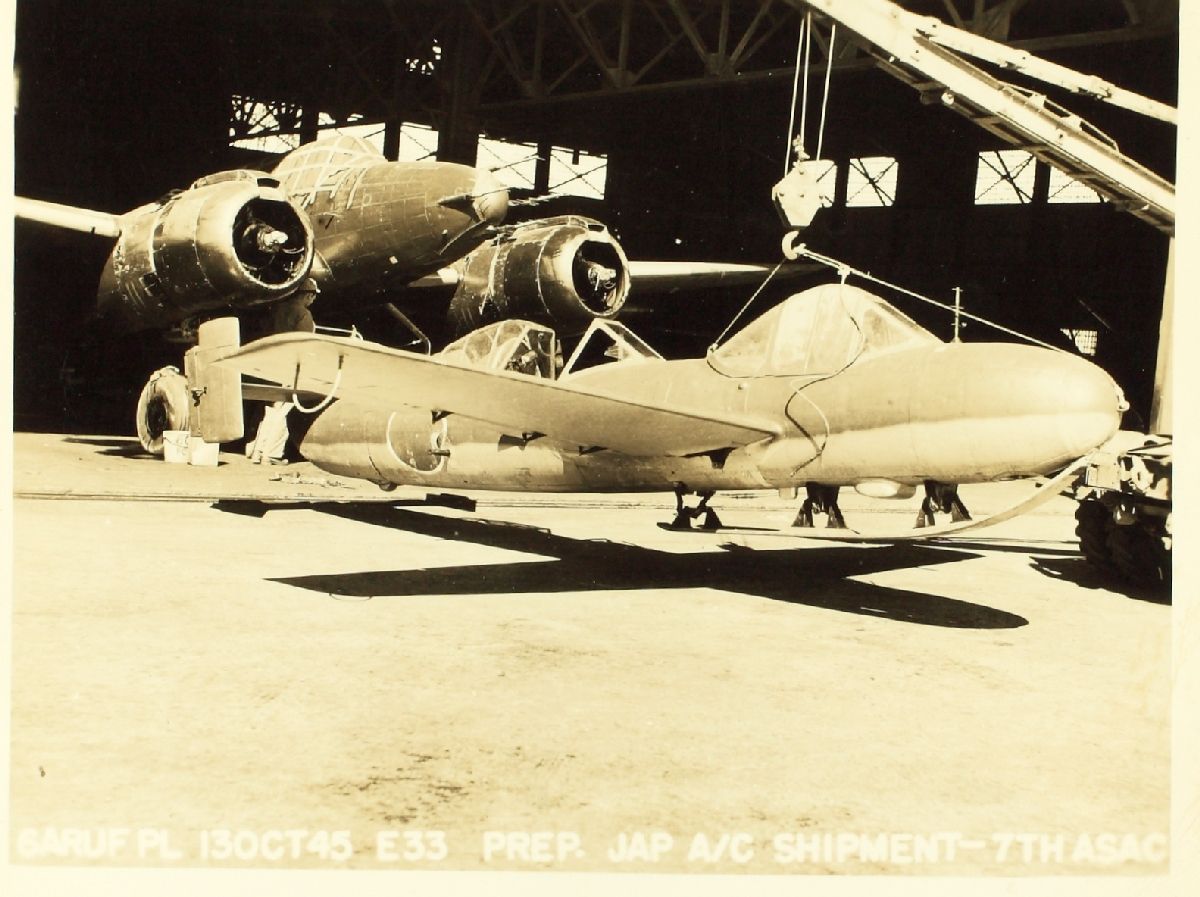
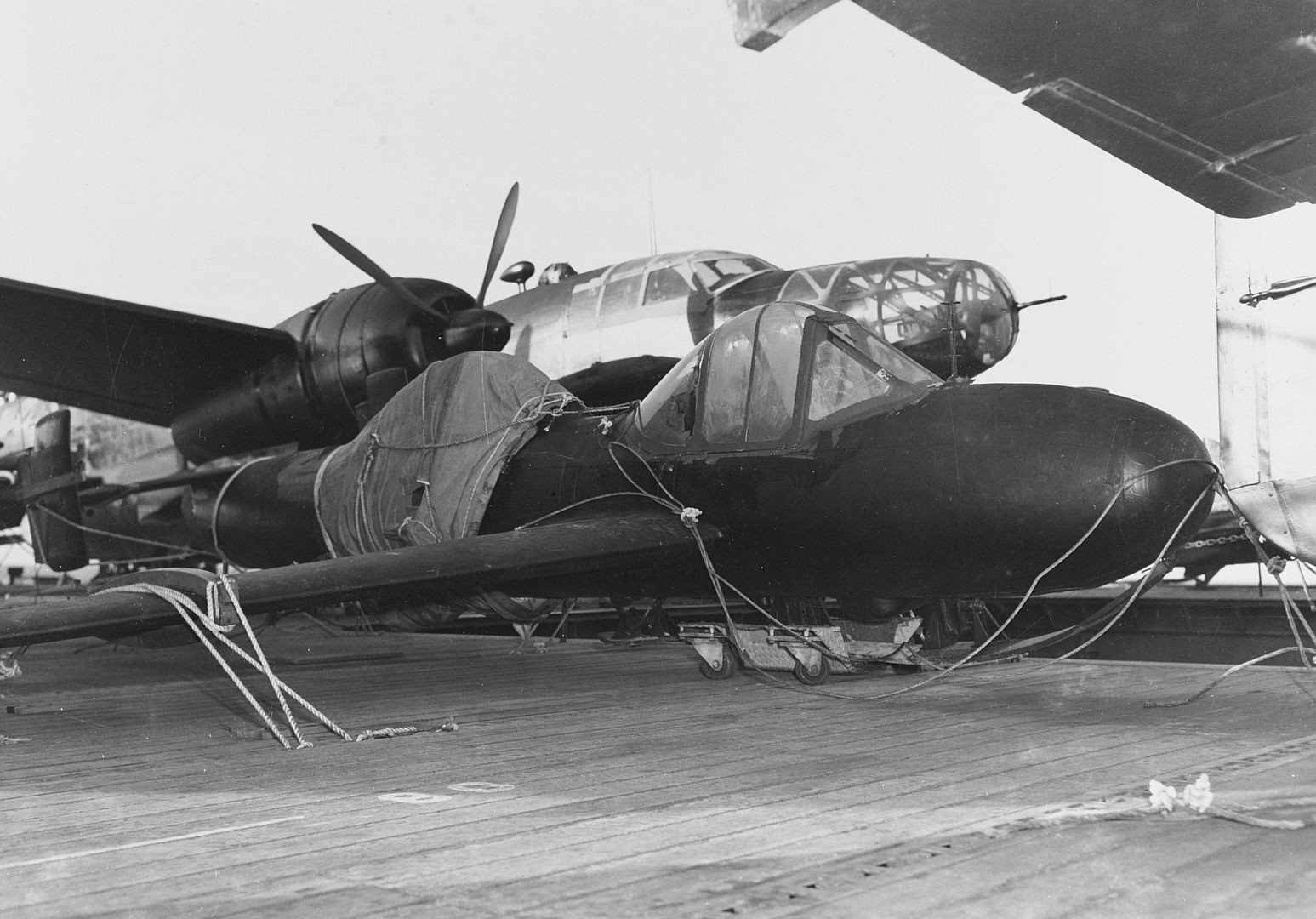
Below propelling charges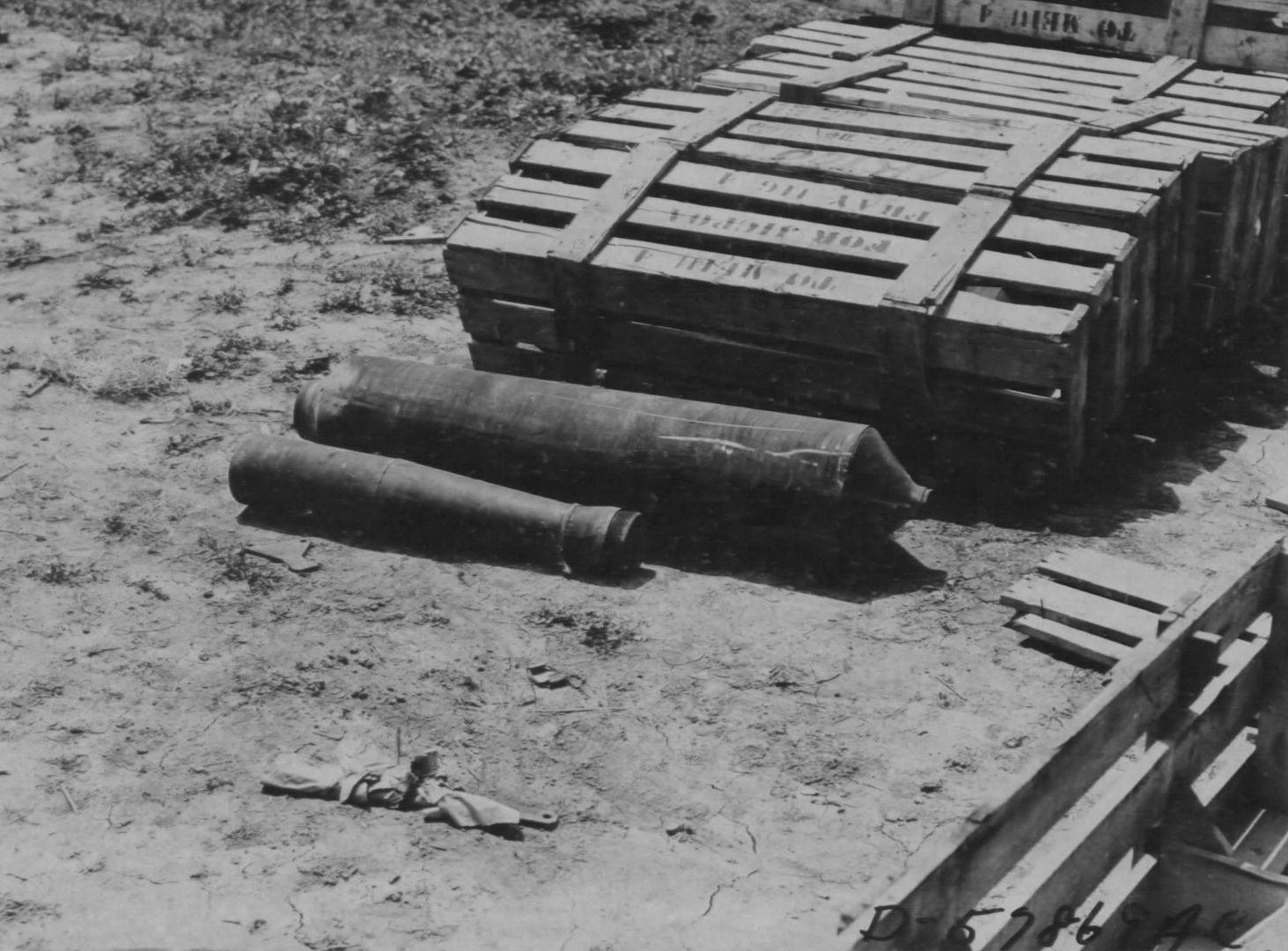

Below cockpit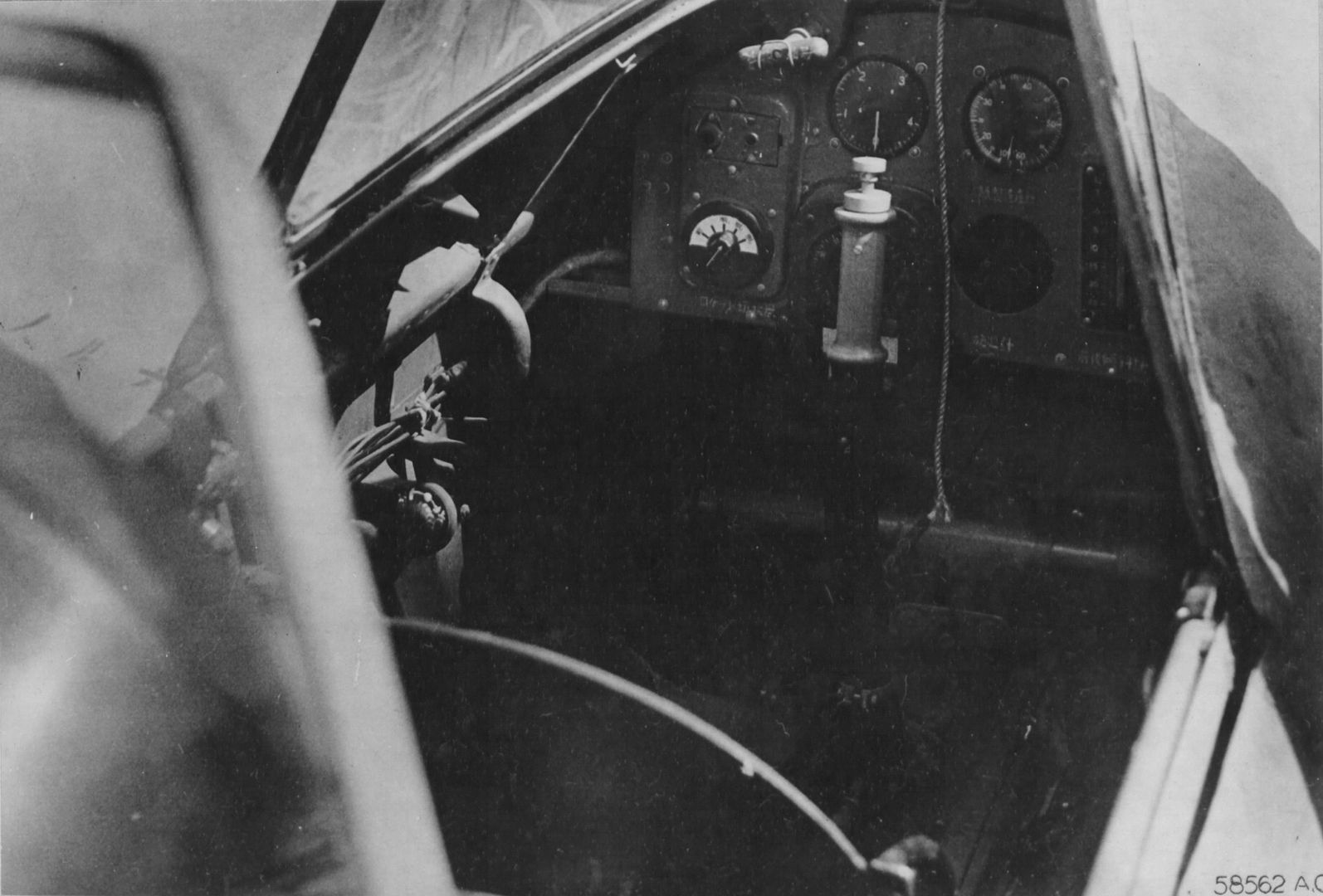

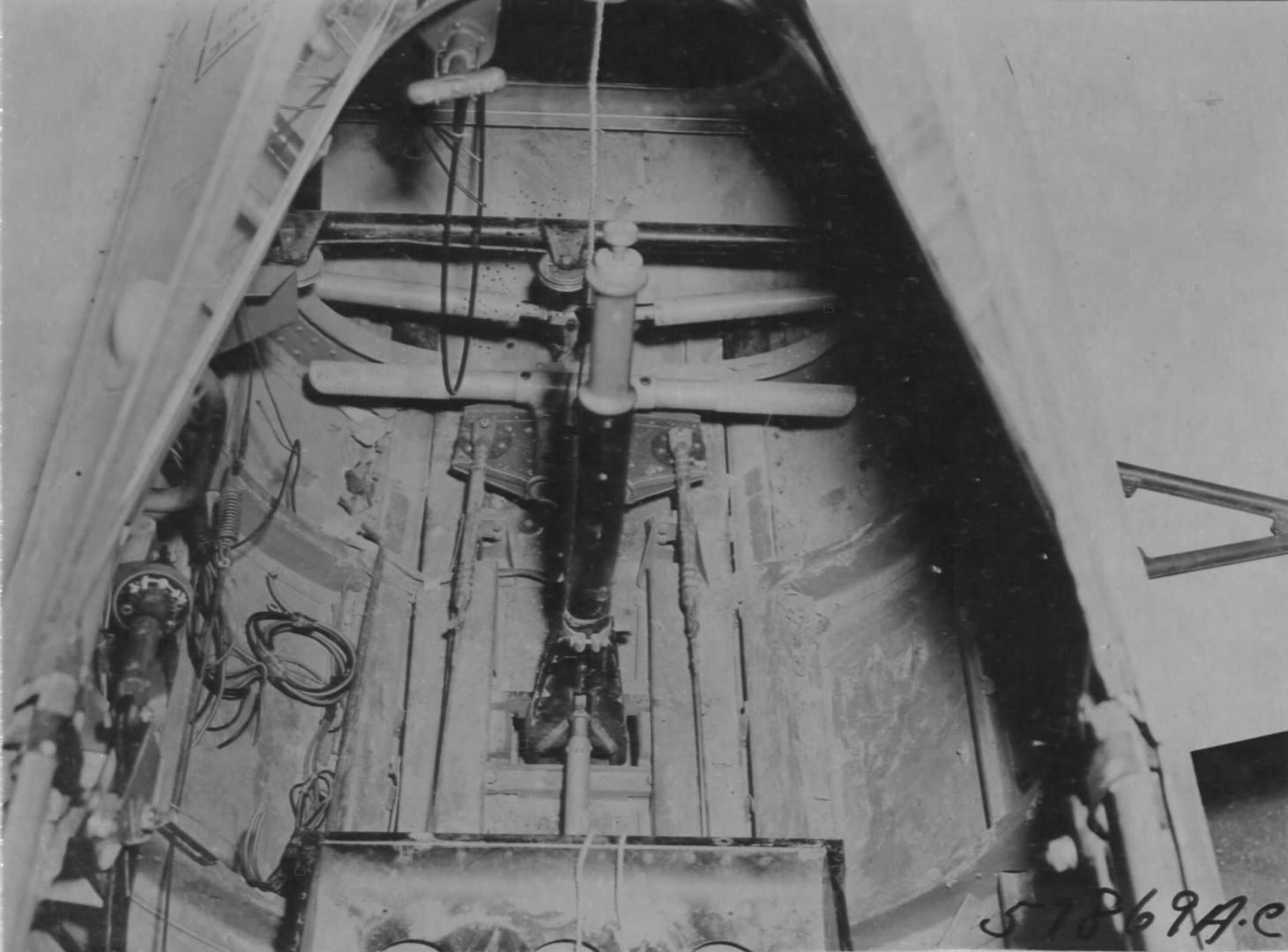
Below on Okinawa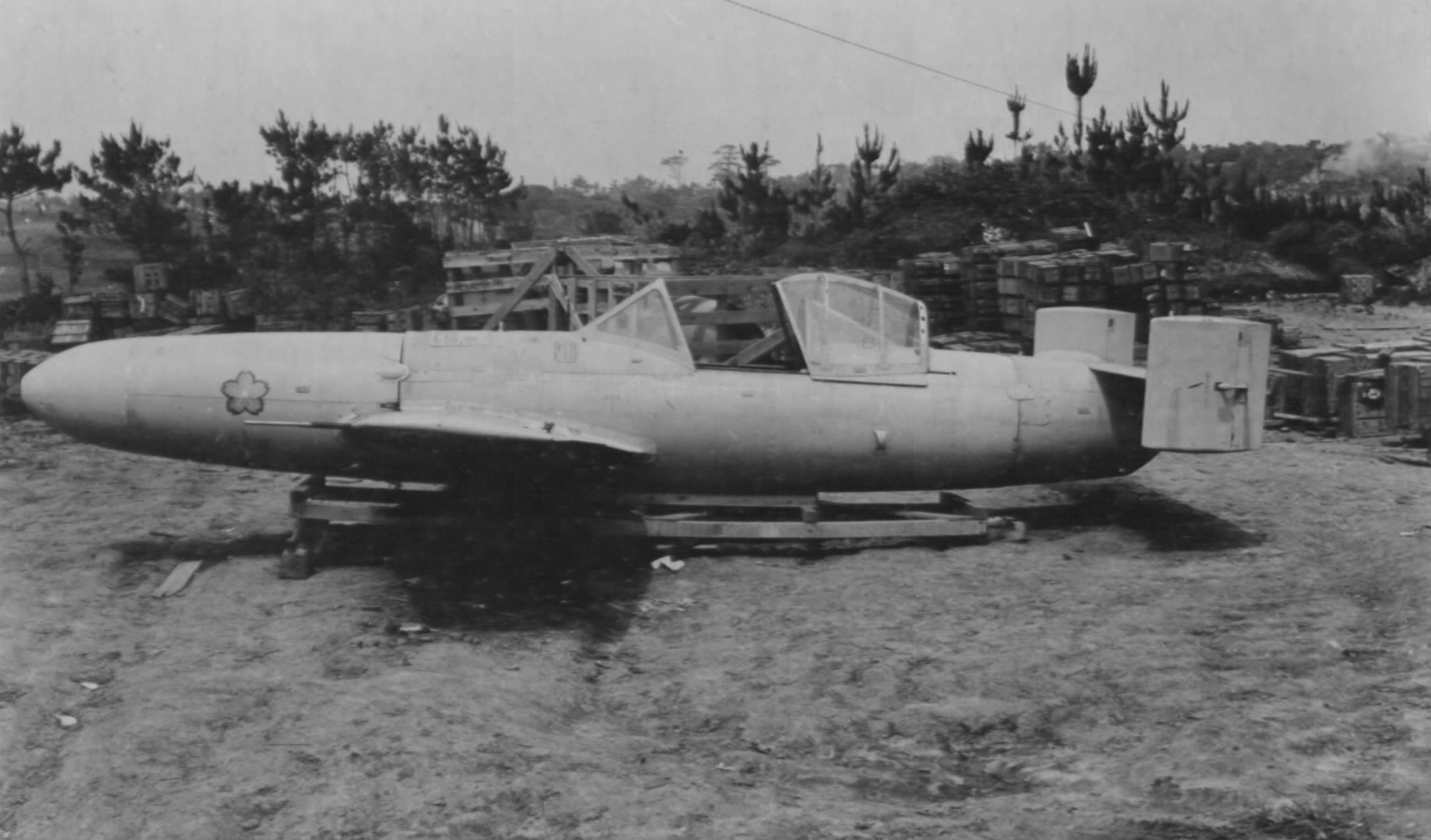

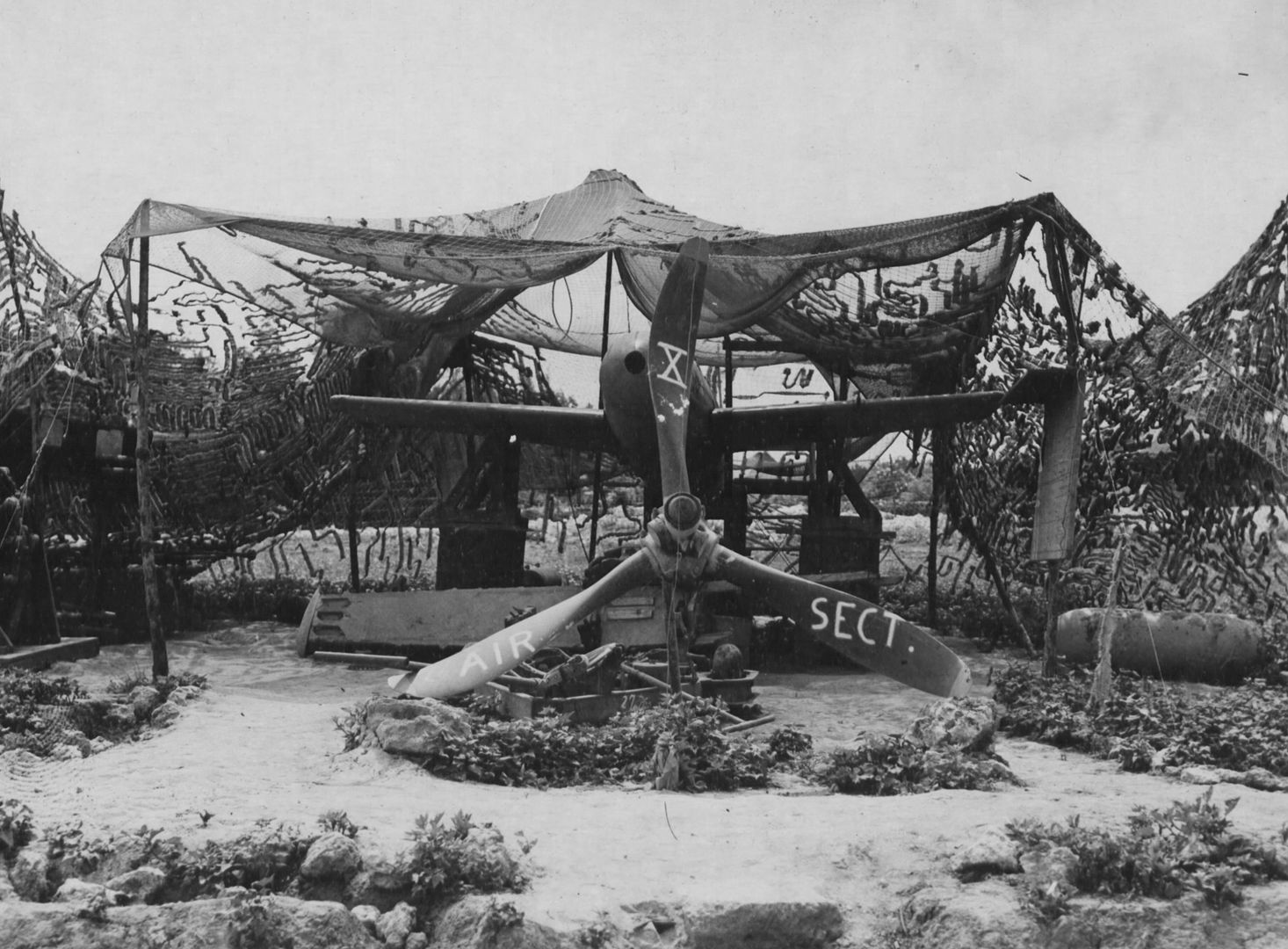

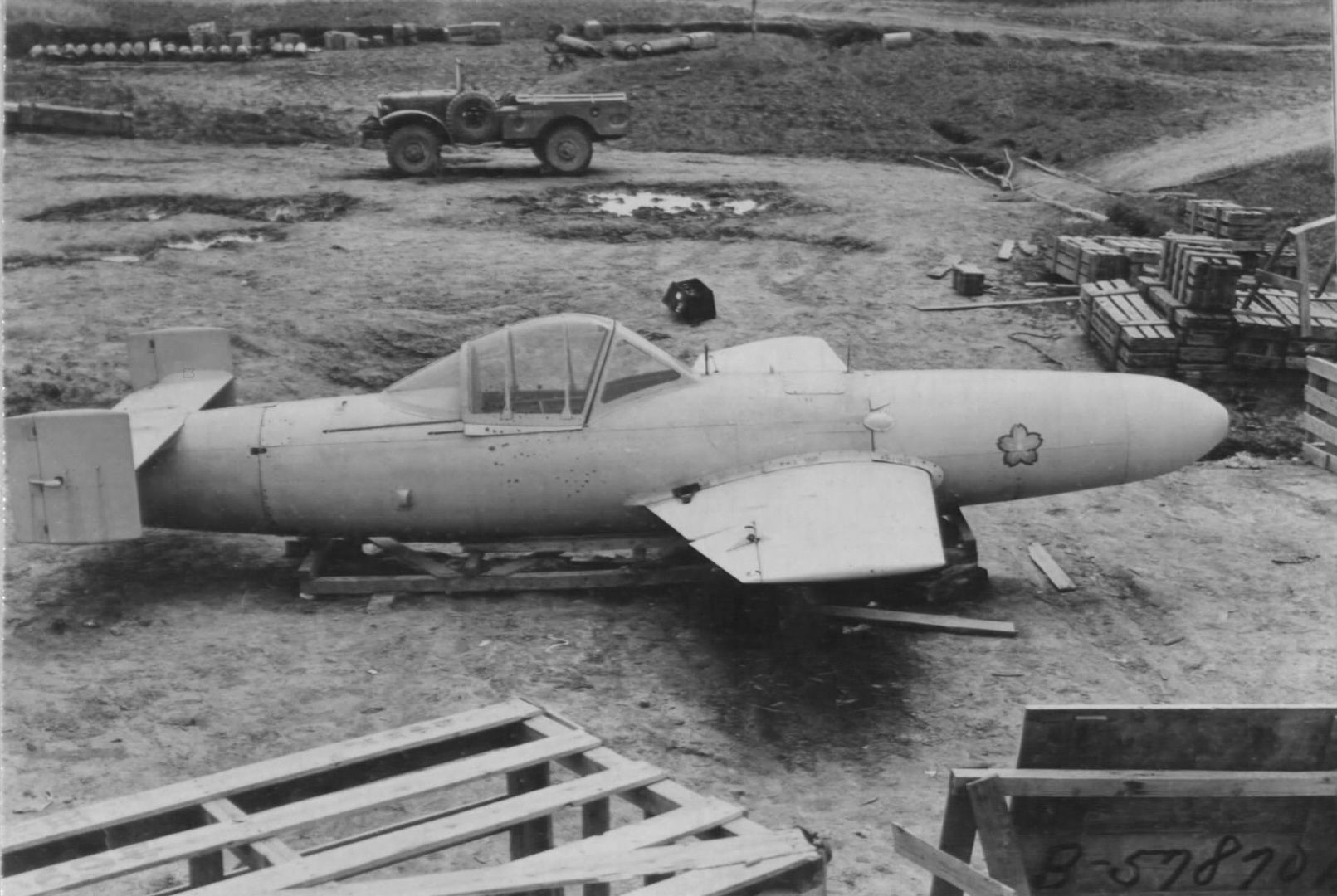


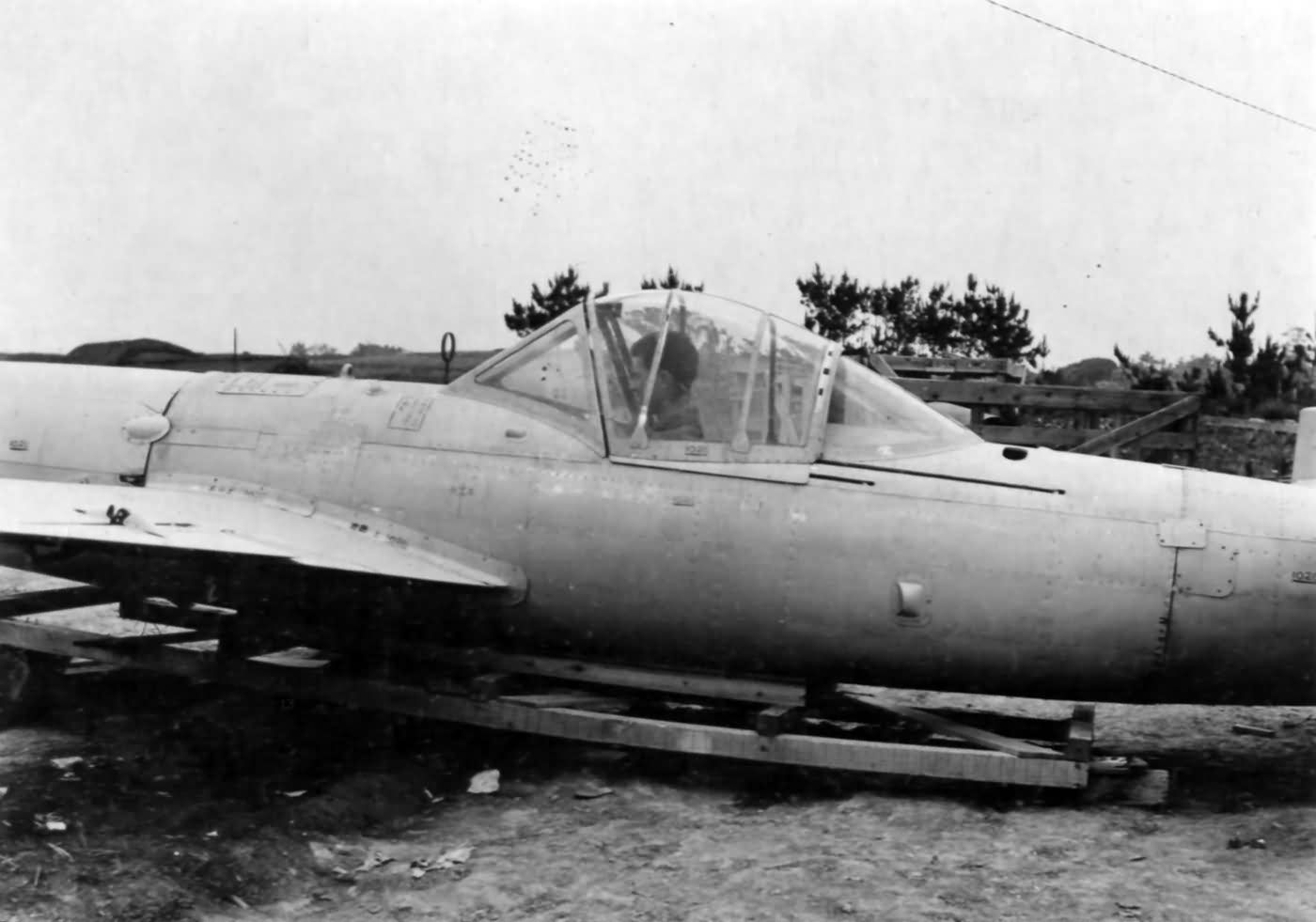
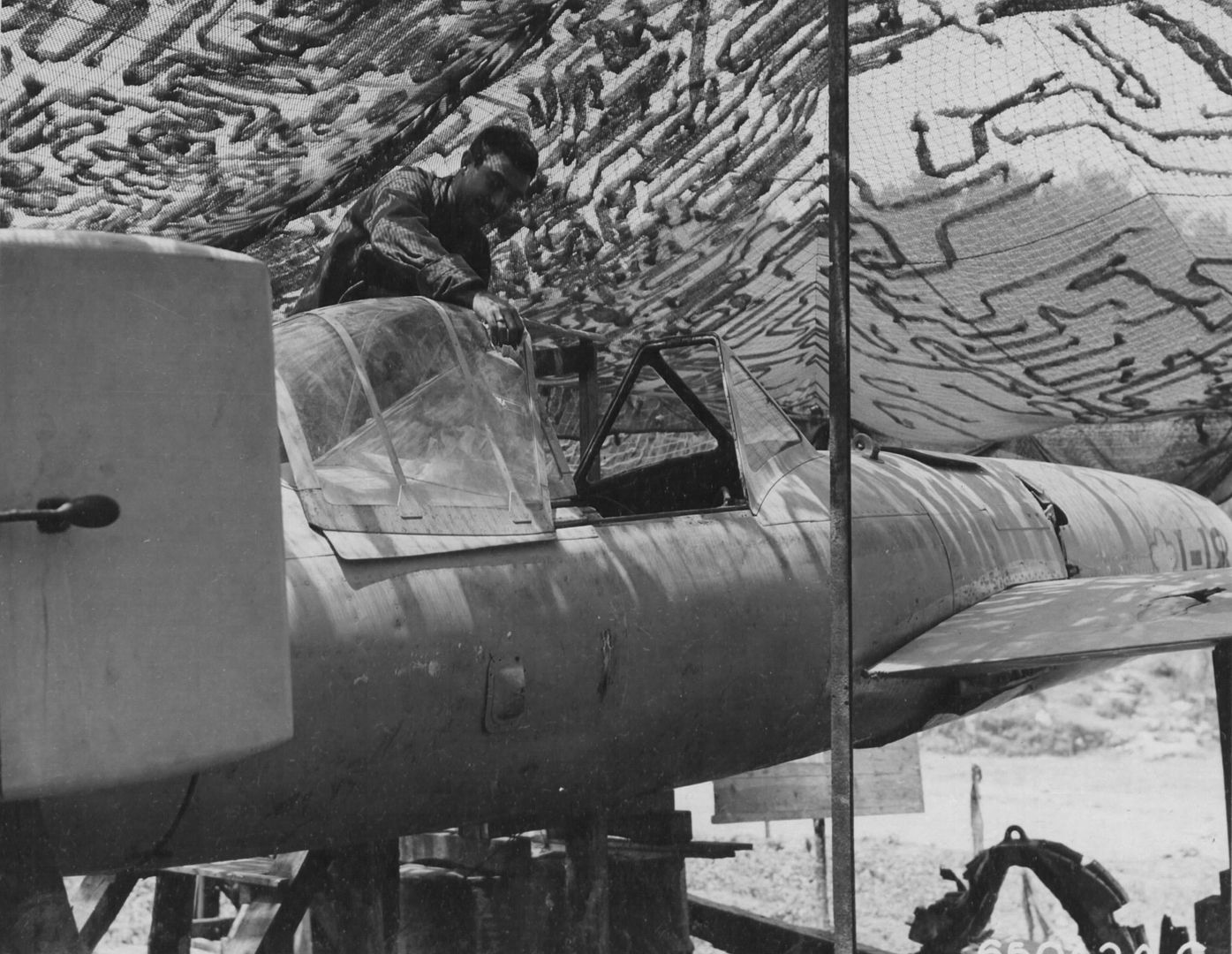
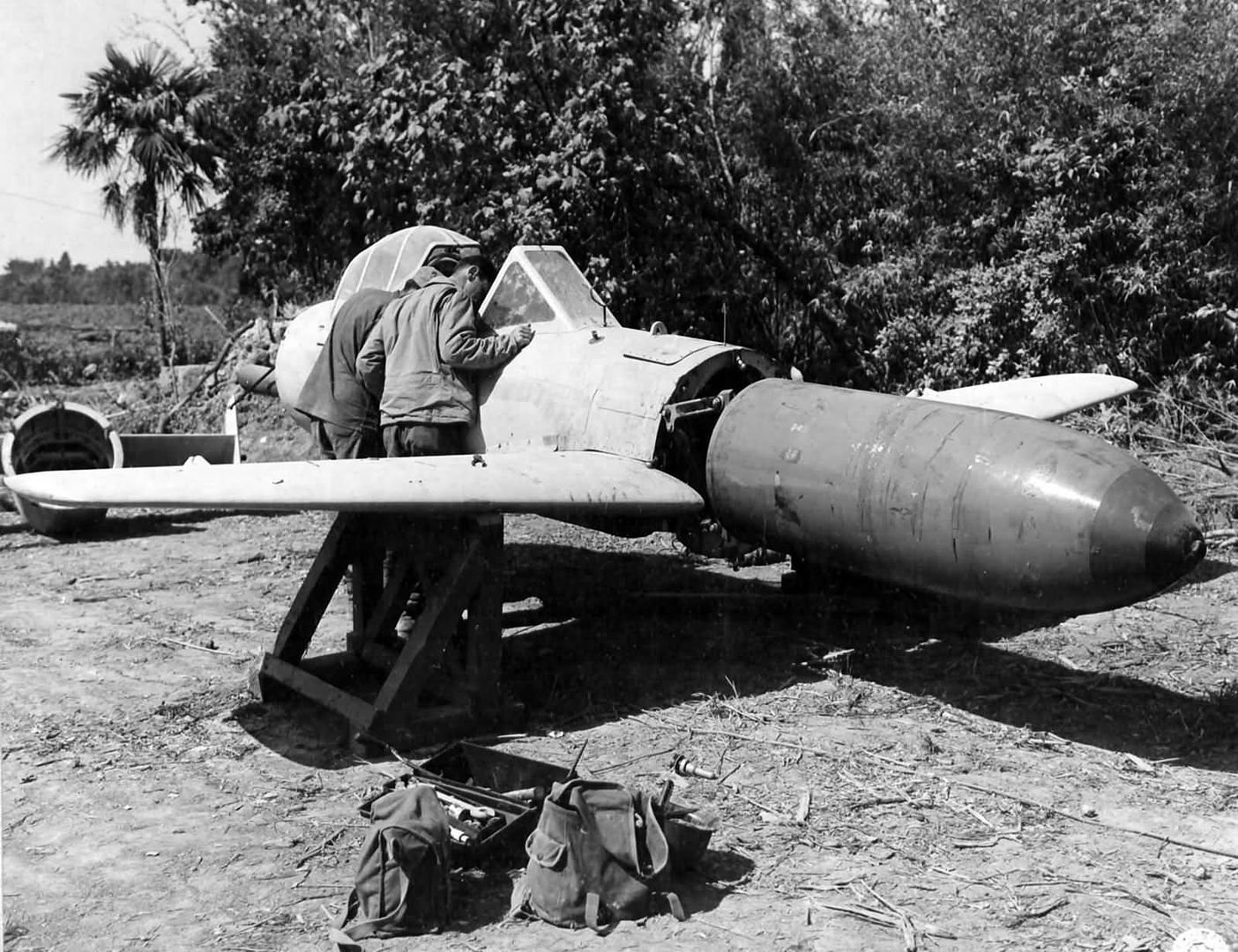
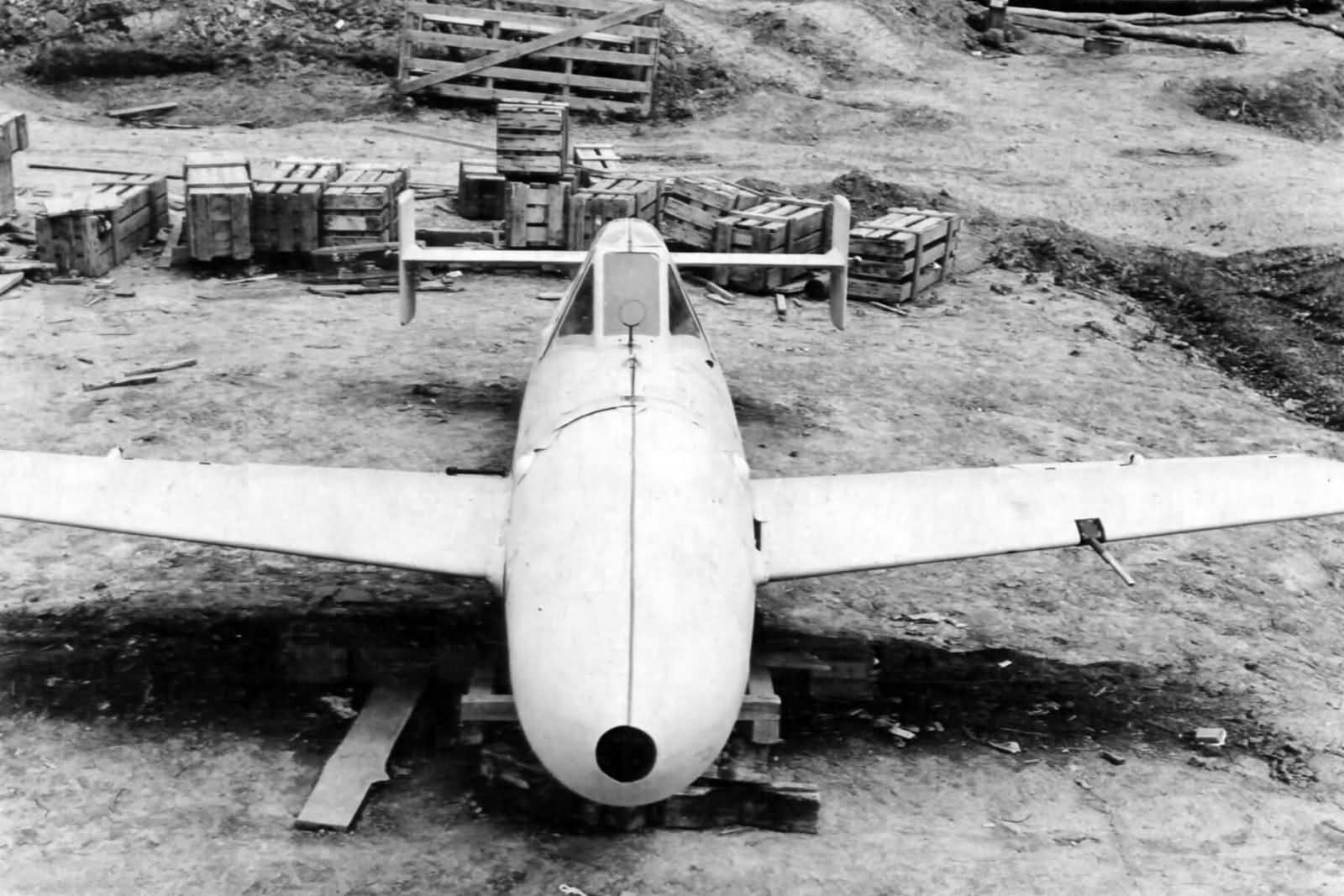
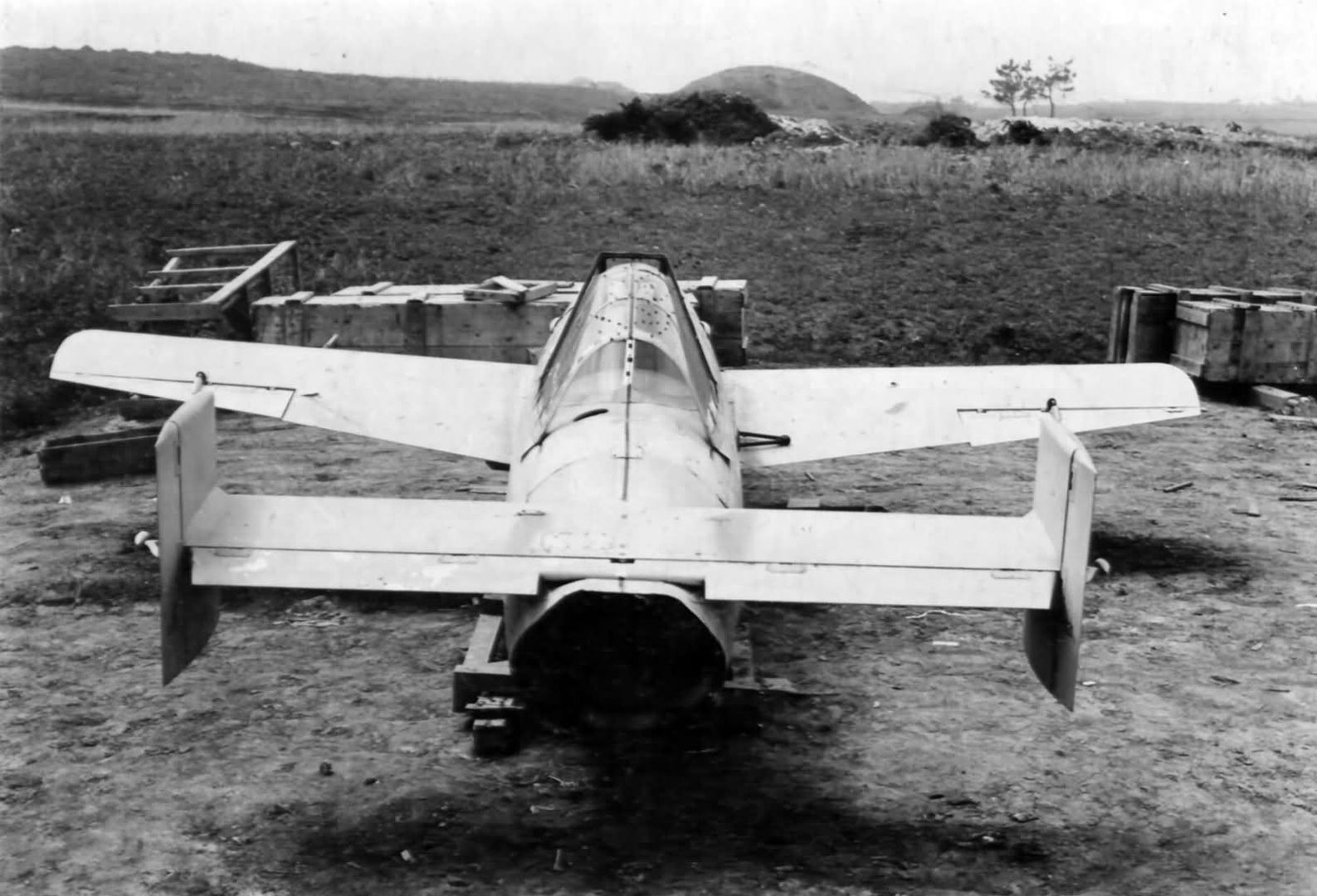
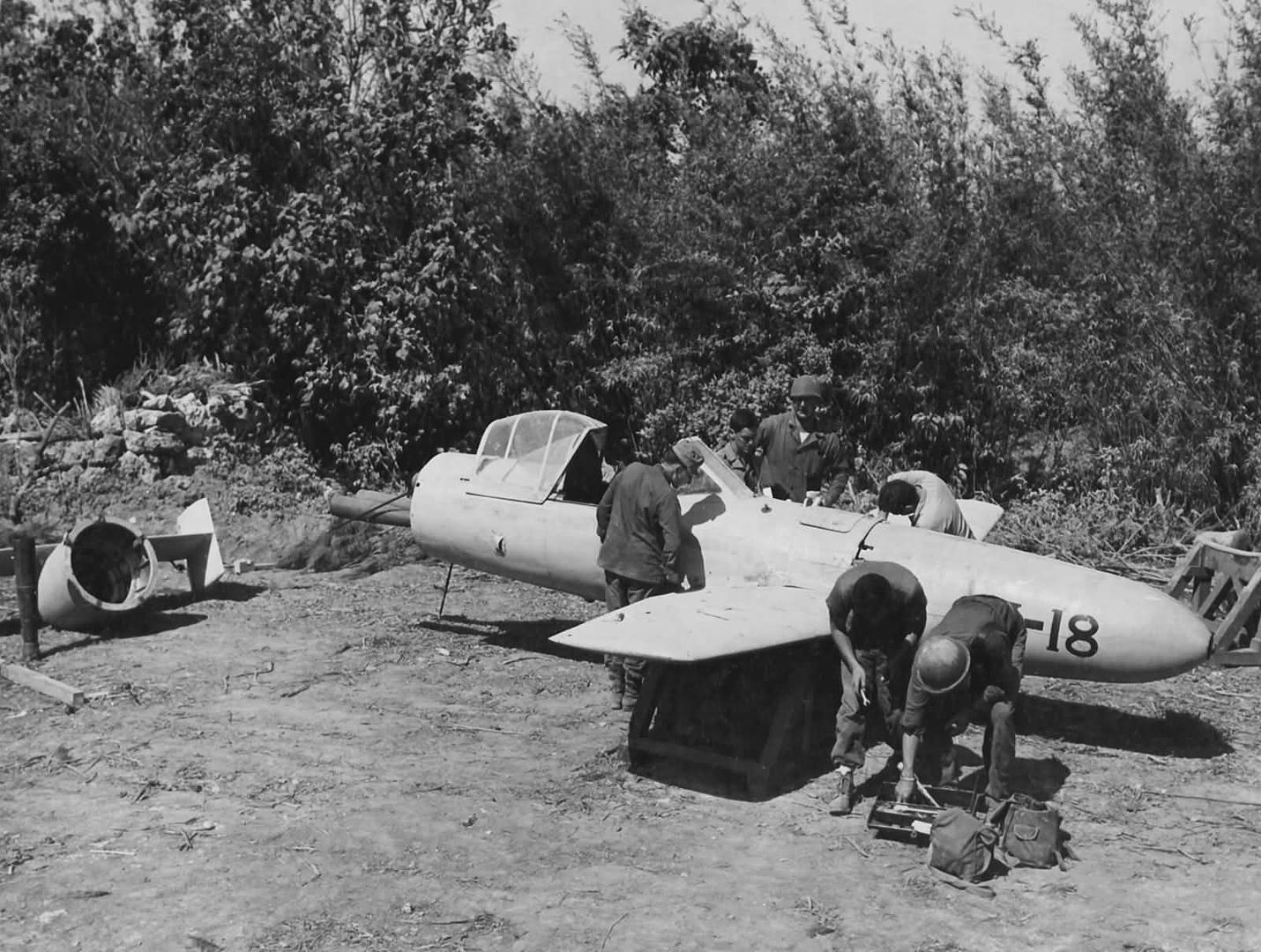
Near Atsugi Airdrome Japan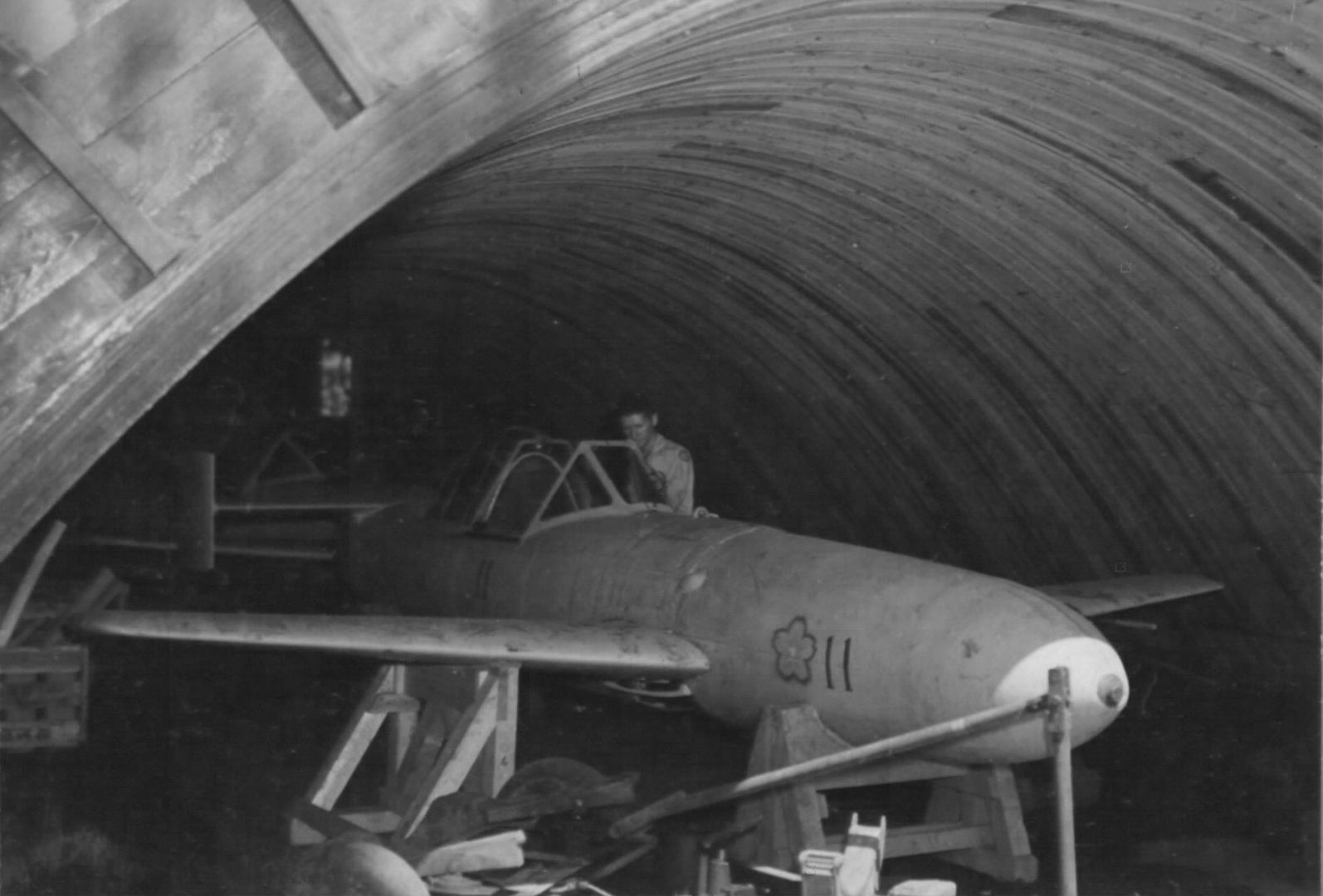
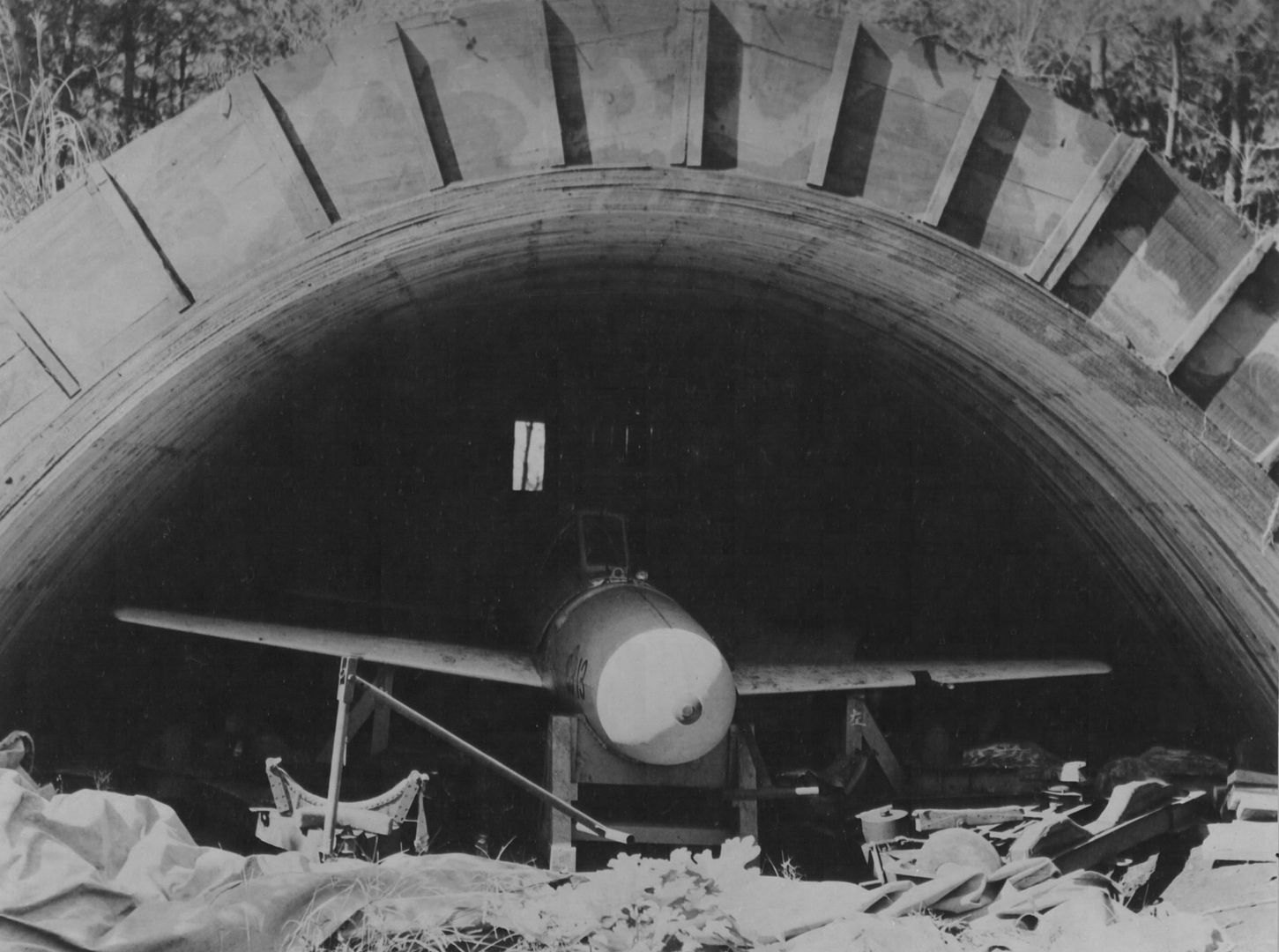
Below model 22 with One 551-lb.-thrust Tsu-11 turbojet, with a Hitachi 100-hp four-cylinder inline auxiliary engine as a gas generator.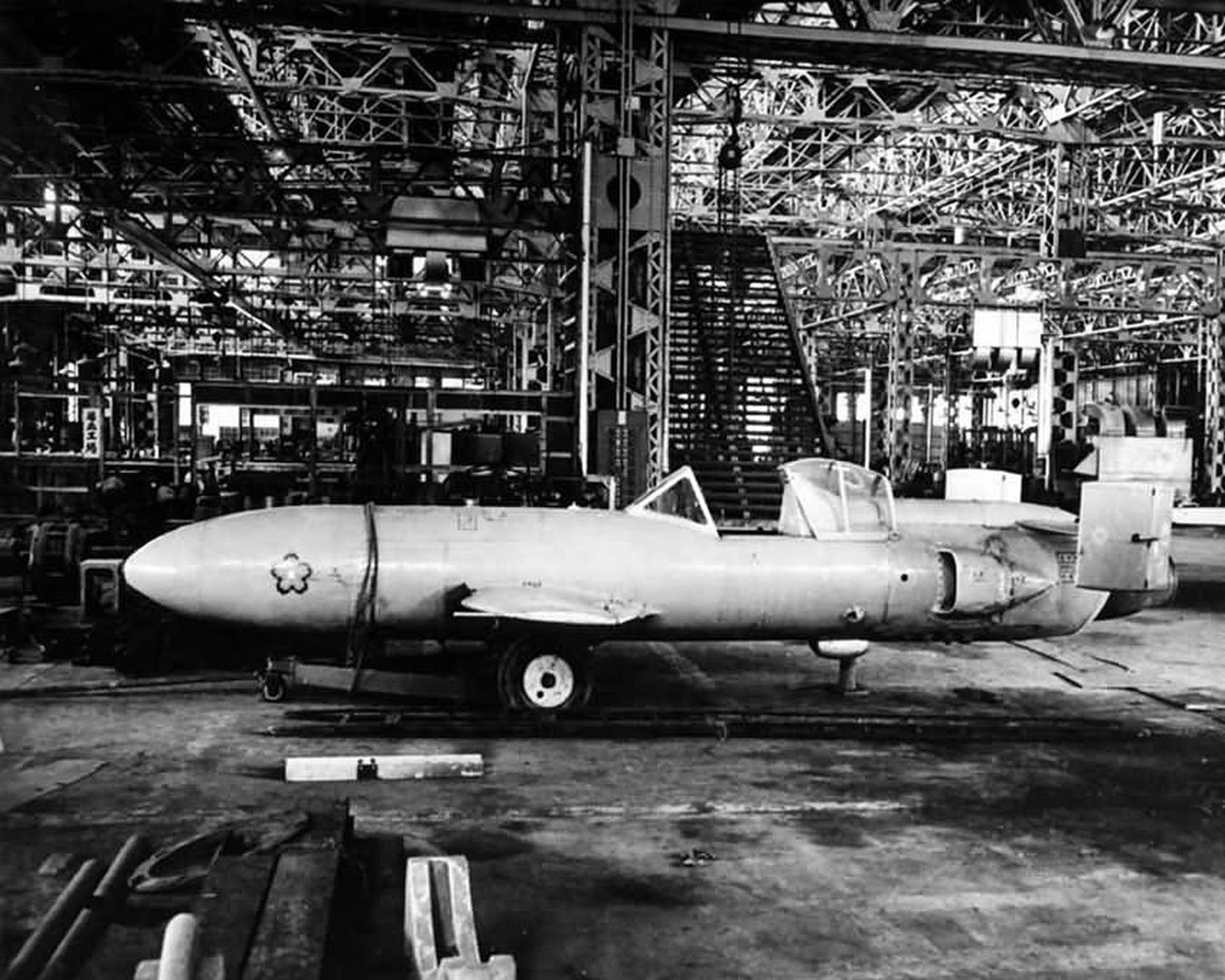
Below captured intact by Marines on Okinawa 26 June 1945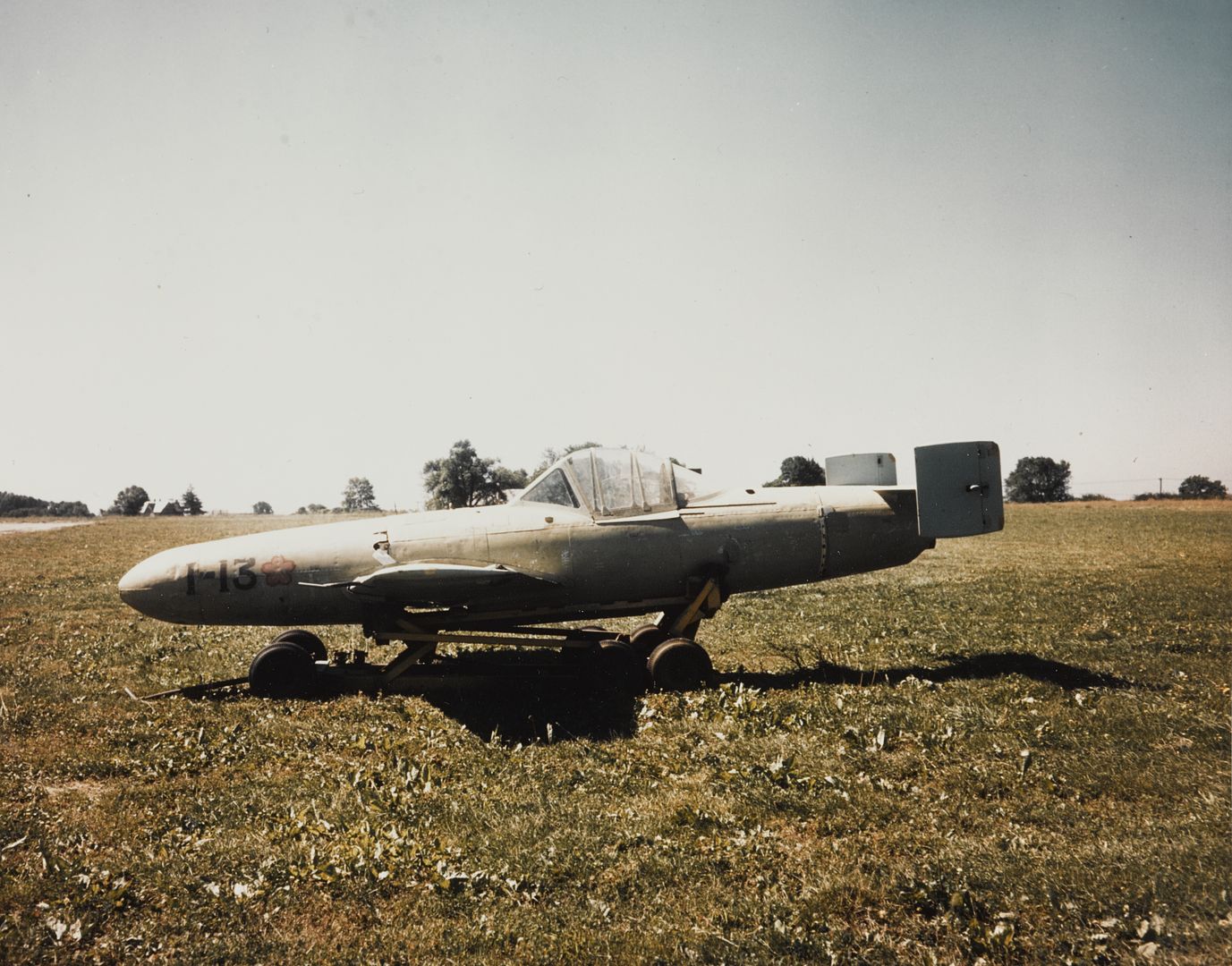
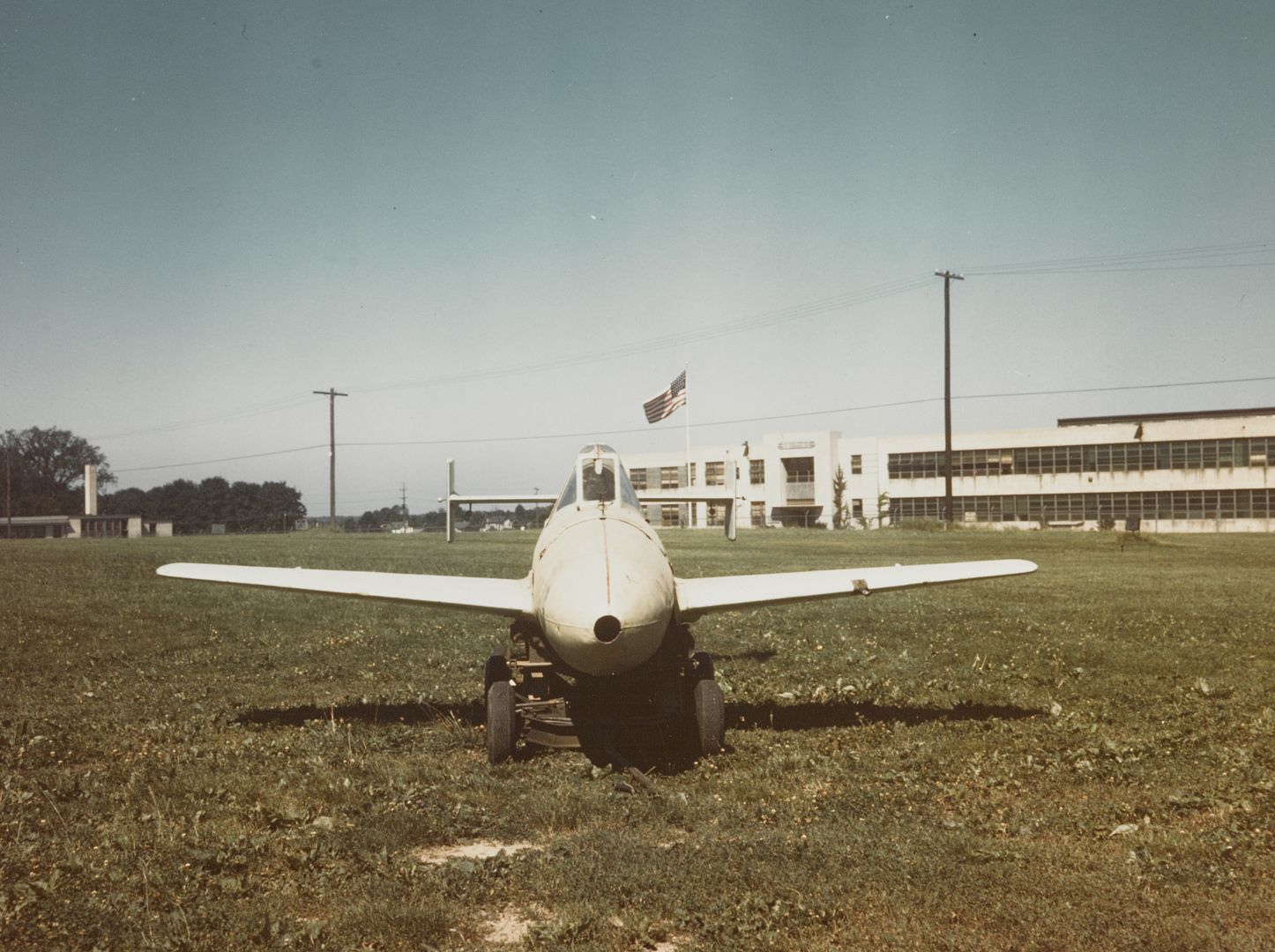
Mother plane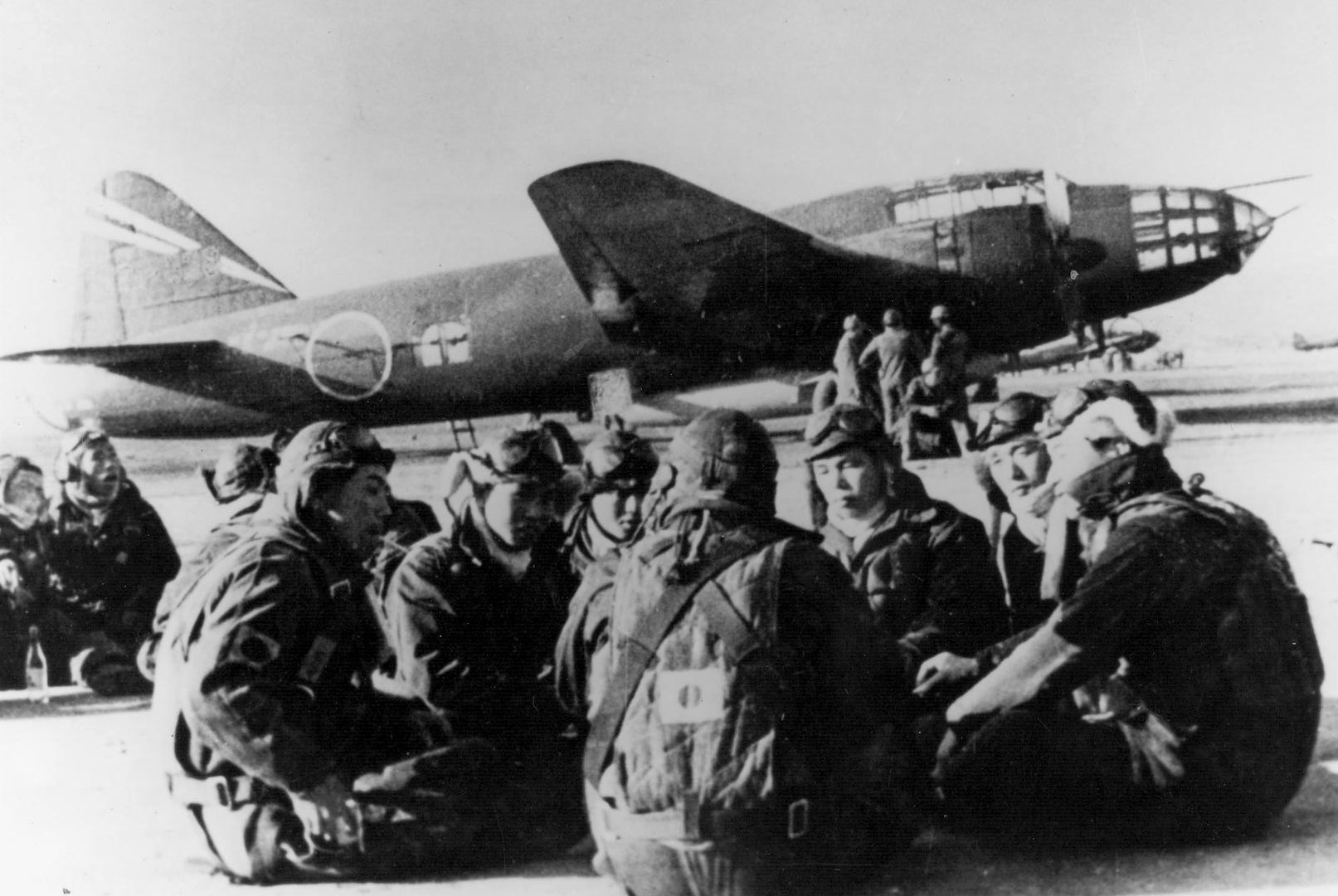
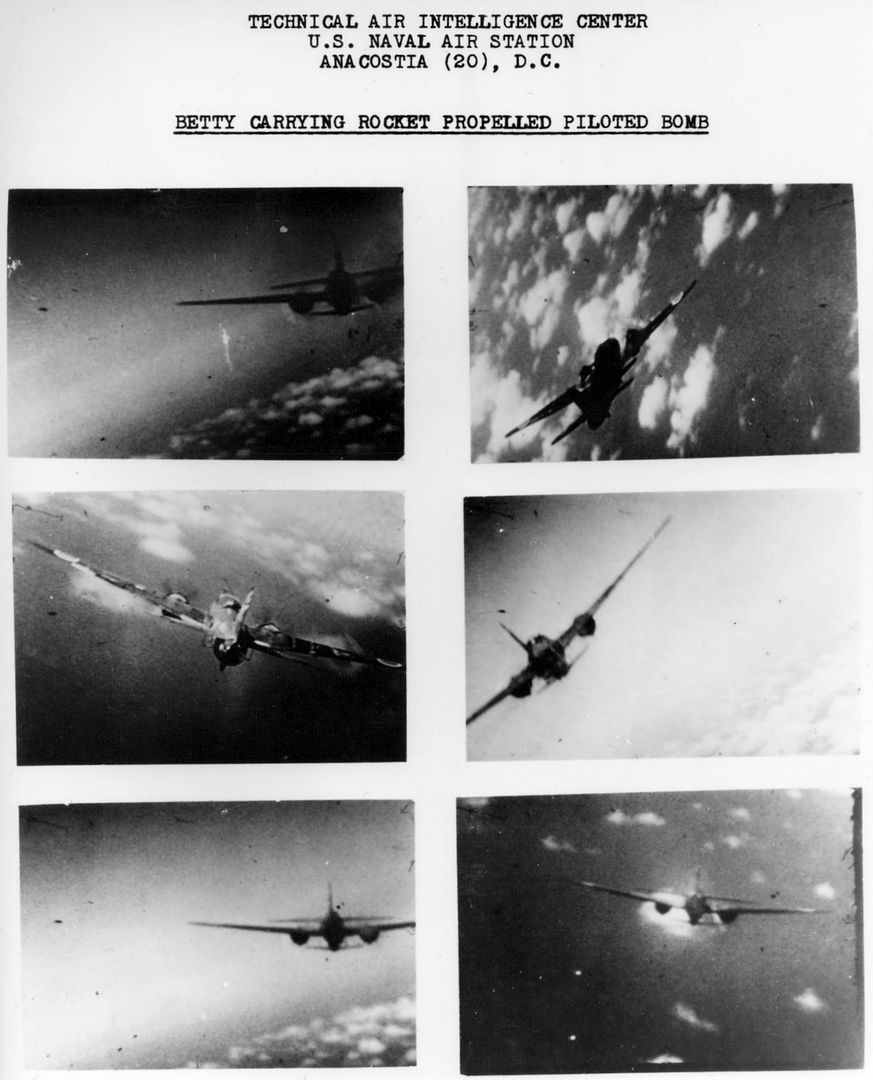
Below tech drawing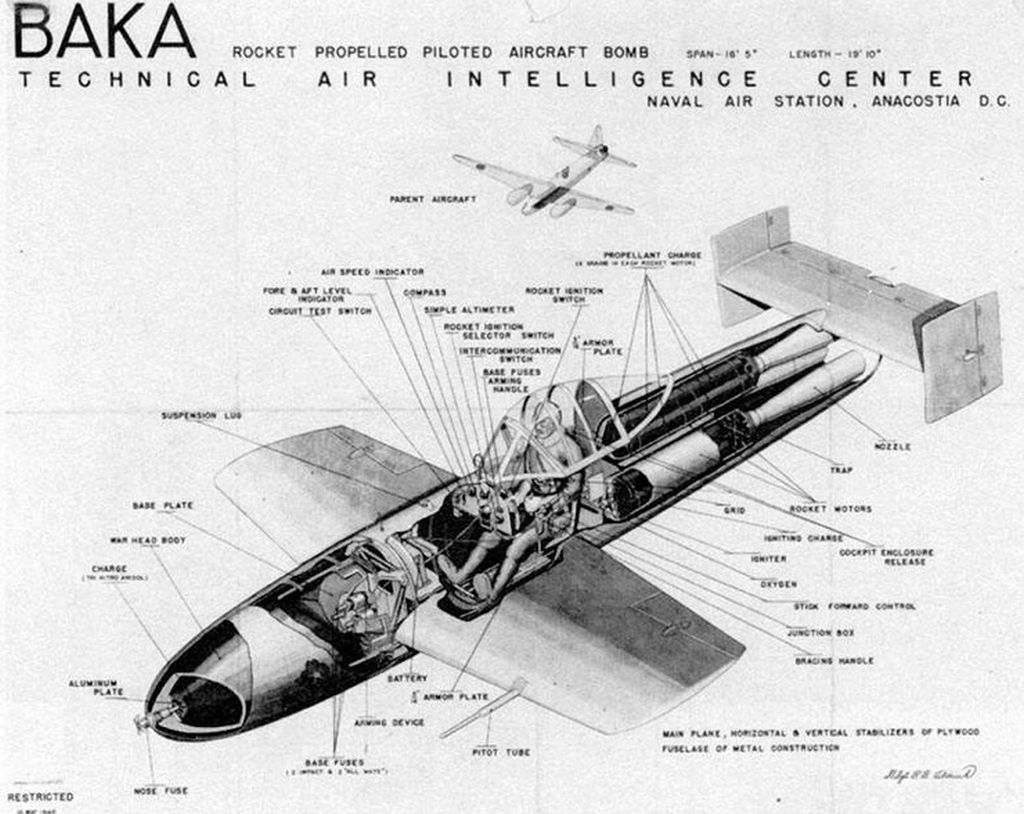
Dimensions, weights, and performance:
(Ohka Model 11)
Wingspan, 16 ft. 9 9/16 in.;
length, 19 ft. 10 13/16 in.;
height, 3 ft. 9 21/32 in.;
wing area, 64.583 sq. ft.;
empty weight, 970 lb.;
loaded weight, 4,178 lb.;
wing loading, 73.1 lb./sq. ft.;
power loading, N/A;
maximum powered speed, 403 mph at 11,485 ft.;
terminal dive velocity, 576 mph.;
range, 23 statute miles.
(Ohka Model 22; all performance figures estimated)
Wingspan, 13 ft. 6 7/32 in.;
length, 22 ft. 6 7/8 in.;
height, 3 ft. 9 9/32 in.;
wing area, 43.055 sq. ft.;
empty weight, 1,202 lb.;
loaded weight, 3,197 lb.;
wing loading, 74.3 lb./sq. ft.;
power loading, N/A;
maximum powered speed, 276 mph at 13,125 ft.;
terminal dive velocity, N/A;
range, 81 statute miles.
Some amazing skins can be found here -- http://axis-and-allies-paintworks.com/download.php?view.360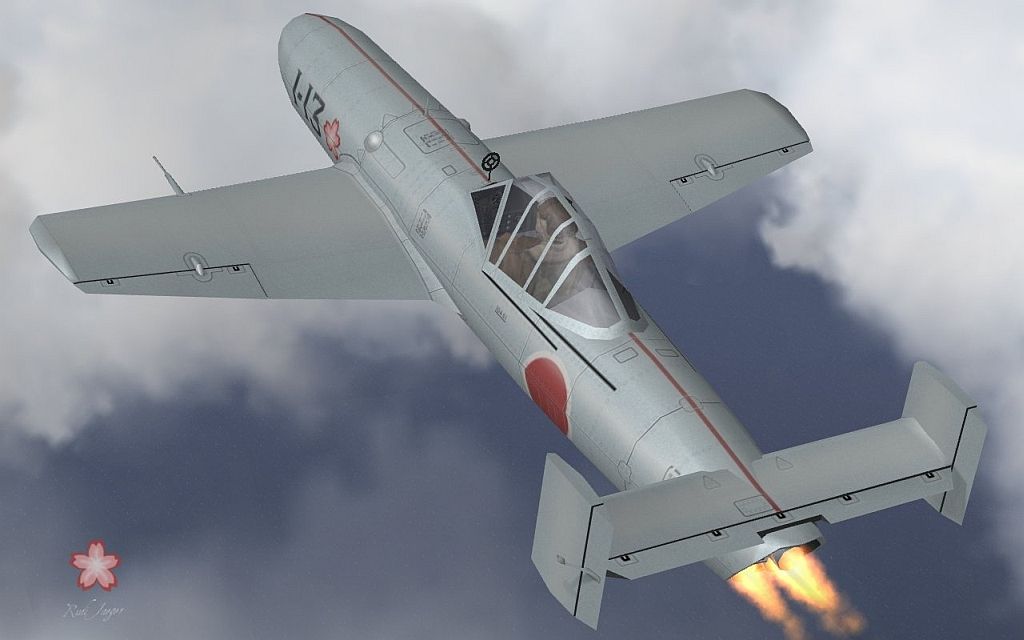
Post a reply
- Go to Previous topic
- Go to Next topic
- Go to Welcome
- Go to Introduce Yourself
- Go to General Discussion
- Go to Screenshots, Images and Videos
- Go to Off topic
- Go to Works in Progress
- Go to Skinning Tips / Tutorials
- Go to Skin Requests
- Go to IJAAF Library
- Go to Luftwaffe Library
- Go to RAF Library
- Go to USAAF / USN Library
- Go to Misc Library
- Go to The Ops Room
- Go to Made in Germany
- Go to Campaigns and Missions
- Go to Works in Progress
- Go to Juri's Air-Raid Shelter
- Go to Campaigns and Missions
- Go to Works in Progress
- Go to Skinpacks
- Go to External Projects Discussion
- Go to Books & Resources
